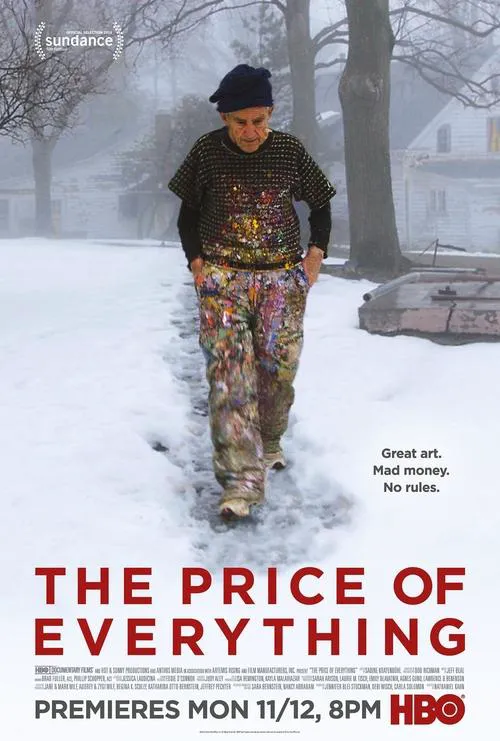The Price of Everything

あらすじ
The Price of Everything is a documentary film that provides an intimate and thought-provoking look at the art world, particularly at the intersection of art and commerce. The film is narrated by the renowned actor, Jeremy Irons, whose deep and resonant voice sets the tone for the exploration that follows. Through a rich narrative, the film invites the audience to question the value and significance of art in our society, where the drive for profit often takes precedence over the passion and meaning behind the creative process. The film begins by highlighting the work of several prominent artists, including George Condo, Jeff Koons, Gerhard Richter, and Njideka Akunyili Crosby. These artists have achieved significant success and recognition, but their practices and philosophies on art are as varied as they are fascinating. The documentary presents a nuanced portrayal of each artist, providing a glimpse into their creative processes, interests, and motivations. Through interviews and footage, the filmmakers invite the audience to engage with the artists' thoughts and works on a personal level, fostering a deeper understanding of the complexities of the art world. Condo, an American artist known for his large-scale, hyper-realistic paintings of fantastical beings, reflects on his use of bold colors and distorted forms to create new realities. His artistic process is characterized by a sense of experimentation and exploration, as he seeks to create new emotional connections with his audience. In contrast, Jeff Koons, another prominent figure in the art world, presents a more commercial and market-driven approach to art. His use of high-end materials and elaborate production processes often sparks controversy, as critics question the value of his artwork beyond its monetary worth. As the film highlights, Koons' focus on the production and sales process underscores his ambition to create a new kind of artistic experience, where the viewer is an active participant in the creative process. Gerhard Richter, a German artist with a storied career spanning over five decades, grapples with the tension between conceptualism and representational art. His work, which often incorporates elements of abstract expressionism, raises questions about the nature of representation and the role of the artist in contemporary society. With his characteristic humility, Richter shares his thoughts on the fleeting nature of art and the impossibility of capturing reality in a tangible form. In a remarkable interview sequence, he recounts the moment when, decades ago, an unknown piece by an American artist arrived at his gallery. The artwork was unsigned and unclaimed, but Richter's curiosity and imagination were piqued by the possibilities it represented, and it has since become one of his most celebrated works. Njideka Akunyili Crosby, a Nigerian-American artist based in Baltimore, offers a refreshing and optimistic perspective on the art world. Her vibrant and intricate works are imbued with elements of personal history and cultural narrative, reflecting her experiences as a woman of color in a predominantly white-dominated art world. Crosby's art is characterized by its intricate layering of images and symbolism, inviting the viewer to engage with her creative universe on multiple levels. In a particularly poignant moment, she shares her thoughts on the significance of family and community, emphasizing the ways in which our personal experiences inform and shape our creative processes. These portraits of four remarkable artists set the stage for a broader exploration of the intersection of art and commerce. Through interviews with collectors, dealers, and auctioneers, the film provides a comprehensive view of the market-driven forces that shape the art world. The role of galleries, museums, and biennales is examined, as are the networks of influential collectors and curators who play a significant part in promoting artists' careers. The documentary sheds light on the tensions between artistic vision and economic constraints, as well as the ongoing debates about the value of art beyond its monetary worth. A key theme that emerges in The Price of Everything is the importance of recognizing artistic passion and creativity as a source of value in and of themselves. Rather than reducing art to its monetary potential, the film argues that its true worth lies in its ability to evoke emotions, challenge perspectives, and bring people together. As the filmmakers astutely observe, art can be both a reflection of its time and a powerful tool for social commentary. The film ultimately raises essential questions about the nature of art, its value, and its purpose in contemporary society, making it a compelling and thought-provoking watch for anyone interested in the complex world of art and commerce.
レビュー
おすすめ




